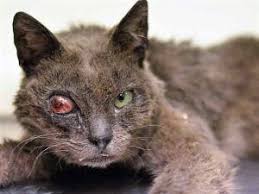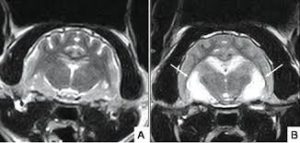Cat Strokes: The Silent Stalkers

While relatively rare, a cat stroke is always alarming.
A stroke occurs when the flow of blood to the brain is obstructed, resulting in almost immediate tissue damage and disruption of your cat’s bodily functions. Therefore, recognizing the symptoms, getting a diagnosis and beginning treatment can mean the difference between life and death for your purr-ecious pet.
 These symptoms include: seizures and/or staggering; obvious signs of pain or extreme anxiety; unconsciousness; refusal to drink for 24 hours or more; walking in circles; head tilt; overall weakness; change in eye movements/uneven pupils; vomiting, and not eating.
These symptoms include: seizures and/or staggering; obvious signs of pain or extreme anxiety; unconsciousness; refusal to drink for 24 hours or more; walking in circles; head tilt; overall weakness; change in eye movements/uneven pupils; vomiting, and not eating.
If your cat exhibits one or more of these signs, bring her to the vet or to the closest emergency clinic right away! Although not proof paws-itive of a stroke, she does require a prompt and thorough examination.
Did you know that there are three variations of strokes? A thrombotic stroke is when a blood clot forms in an artery to the brain. An embolic stroke is when a blood clot forms in another location then gets stuck in the part of the bloodstream that supplies blood to the brain. A hemorrhagic stroke is when a blood vessel inside the brain itself leaks.
 Any abnormality in your cat’s blood flow, namely, the creation of a blood clot or a ruptured blood vessel, is usually indicative of some underlying issue. While the underlying issue may have gone undetected – and unsuspected – for some time, the obstruction itself can manifest itself suddenly. This is the reason your cat may seem healthy one minute and be in dire straits the next.
Any abnormality in your cat’s blood flow, namely, the creation of a blood clot or a ruptured blood vessel, is usually indicative of some underlying issue. While the underlying issue may have gone undetected – and unsuspected – for some time, the obstruction itself can manifest itself suddenly. This is the reason your cat may seem healthy one minute and be in dire straits the next.
Some main causes of blood clots and/blood vessel ruptures include thyroid issues, kidney issues, diabetes, traumatic injuries, a heart condition, high blood pressure, and brain lesions.
To err on the side of caution, the first step in the vet’s assessment of your cat may be the immediate start of oxygen therapy. Then, to confirm whether or not she has, in fact, suffered a stroke, a CT (computerized tomography) scan and/or MRI (magnetic resonance imaging) will be used. She may also have to spend time in the Intensive Care Unit to have her vital signs monitored and any medications – if necessary — administered. The kinds of medication used depend on the underlying issue that caused the stroke and may include anti-inflammatory medications as well.
Once your stricken cat is, hopefully, cleared to go home with you, her ongoing treatment usually involves keeping her hydrated with subcutaneous fluids and
keeping her under careful observation. While many cats will return to normal within two weeks of suffering a minor stroke, the chances of her developing secondary epilepsy are greatly increased, and this is something no cat owner wants to hear.
But if you’re familiar with the expression “An ounce of prevention is worth a pound of cure”, you’ll be relieved to know that the best way to help your cat avoid a stroke in the first place is by preventing it.
To accomplish this, ensure that she’s always kept in the best shape paws-ible. Feed her the healthiest of diets and keep her weight stable; keep her mentally stimulated and physically active consistently; keep all environmental stressors to a minimum; take her to the vet both for annual medical exams and at the first sign of any changes in her behavior or appearance.
